GHOULIES (1985)
A young man and his girlfriend move into an old mansion home, where he becomes possessed by a desire to control ancient demons.
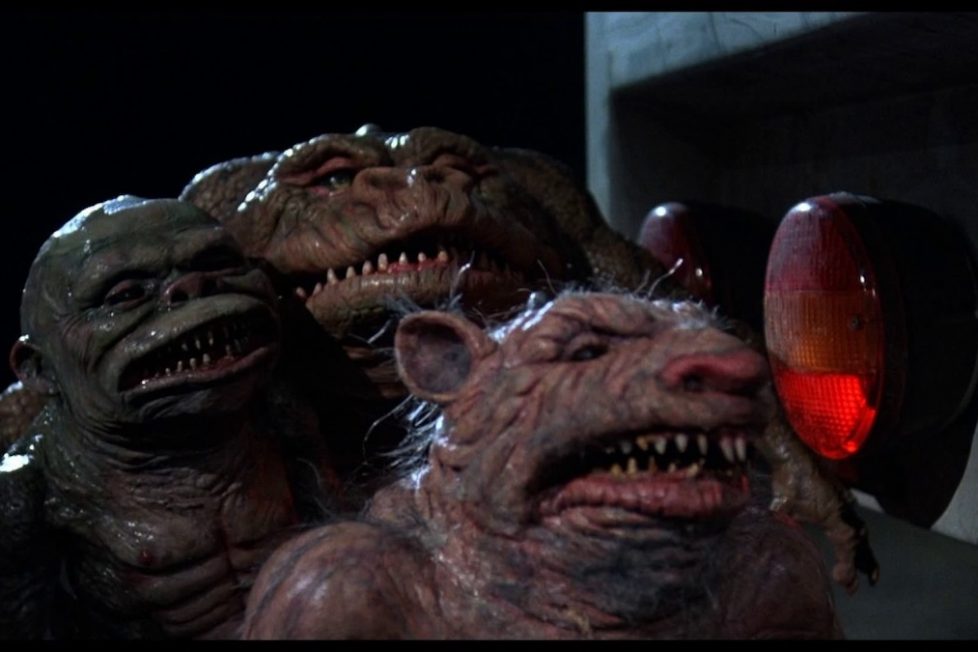
A young man and his girlfriend move into an old mansion home, where he becomes possessed by a desire to control ancient demons.


When one thinks ‘king of the monsters’, one thinks big. Godzilla. King Kong. But smaller monsters have also left big imprints on cinema. Joe Dante mixed the lovable with the horrifying in his classic Gremlins (1984), and Stephen Herek’s Critters (1986) spawned many sequels. But those two movies were being made alongside a third little monster film that often gets overlooked: Ghoulies.
Independent film director and producer Charles Band was heading up Empire Pictures, working with SFX legend Stan Winston on Parasite (1982), but was eager to use his talents to make a proposed creature feature entitled Beasties. Due to presumed wrestling between productions and debts, Band passed on directing duties to Parasite actor Luca Bercovici who, with co-writer Jeffery Levy, pitched a one-location horror that would suit his Beasties idea.
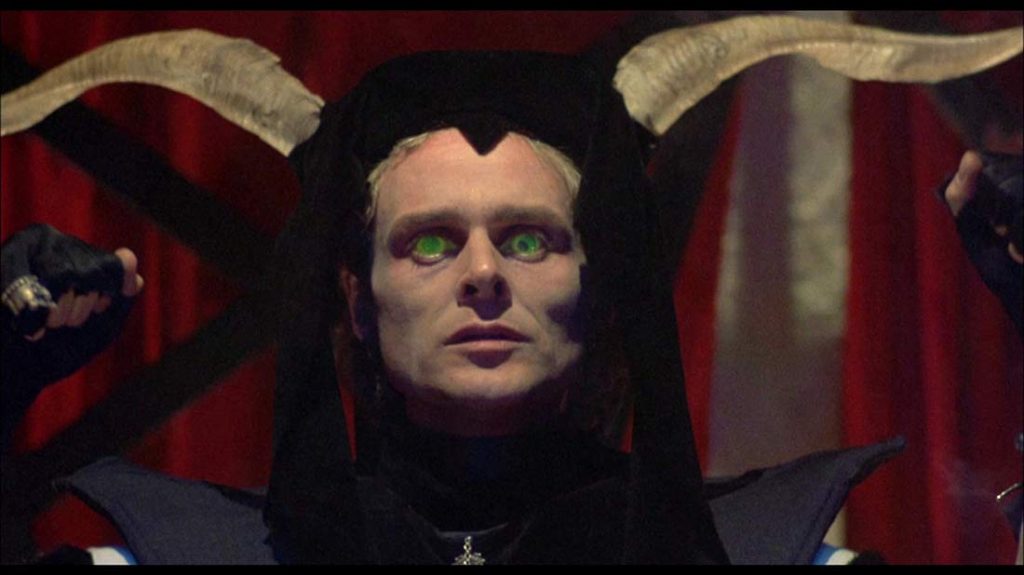
When an evil wizard (Michael Des Barres) fails to sacrifice his son to Lucifer, young Jonathan (Peter Liapis) is rescued by Wolfgang (Jack Nance) until he inherits the family house years later. Moving in with girlfriend Rebecca (Lisa Pelikan), he discovers the occult relics and explores his latent powers through raising grotesque minions to aid his mystic knowledge. While Jonathan’s distracted between maintaining a healthy relationship and his eccentric friends, his summoned ‘Ghoulies’ prepare for mischief under the shadow of his father.
Principal photography on Ghoulies took place in 1984 in a Californian mansion and encountered few problems, aside from a lawsuit against Band and Ghoulies Productions. Domestic distributor Hemdale Film Corporation were upset over “misrepresentation” of home video sales and, while details are sparse, given Band’s multiple companies, aliases, and cost-effective creative ideas, Hemdale was probably uncomfortable with his lax attitude. The best example of this shrewd ingenuity is the iconic poster in which a green Ghoulie clambers from a toilet bowl; a sight several parents fought to ban for allegedly scaring their kids. It’s debatable whether the toilet poster idea was his or Bercovici’s, but the most popular story goes that Band conceived it post-wrap and shot that one scene late in the edit.
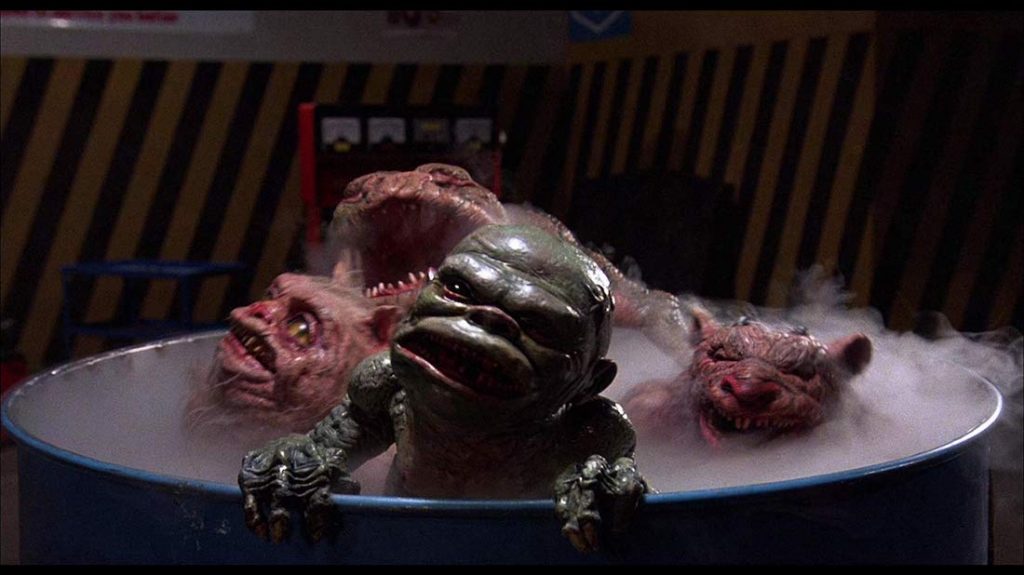
They needed an arresting poster as the aforementioned Gremlins had been released and led to yet another lawsuit by Warner Bros. to further separate their marketing likenesses. It was only Band’s ever-constant scrambling for funds that delayed production for months and allowed Gremlins to premiere first. The irony is most of the initial reviews labelled Ghoulies as a cheap knock-off simply for being released second.
35 years later, how does Ghoulies rank up alongside its big-budget cousin, and the subgenre as a whole alongside Critters, C.H.U.D. (1984), or Troll (1986)? Well, it’s better than Hobgoblins (1988), that’s for sure.
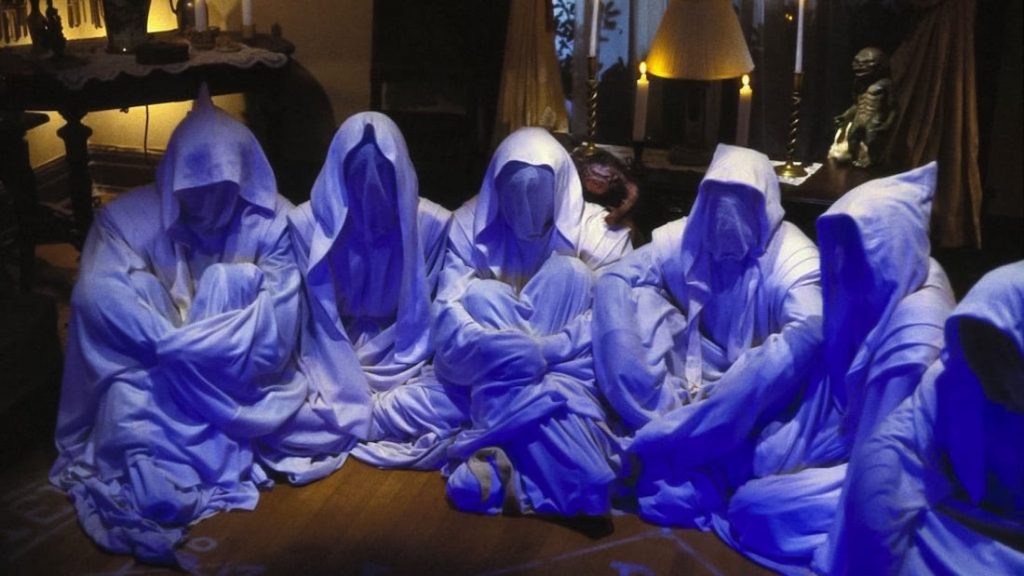
The prologue demonstrates just how much sense the film will make. The Ghoulies themselves are there from the start but don’t expect much from them. And they’re far from personable antagonists like the Gremlins. The wizard Malcolm screams his lines for those in the back-seats as he tries to kill his child while the ineffectual mother shields him with a mystic necklace and Wolfgang escapes with child in hand. Malcolm makes only one attempt at the sacrifice and gives up rather easily, setting the bar for all character motivation. Instead, he takes his anger out on his wife and births some unseen beast from her bulging ribcage. We never see the creature as the opening credits roll, and Bercovici and editor Ted Nicalou’s answer to most narrative questions involves fading out scenes and hoping the audience will move on.
Years pass and the two lovebirds have arrived in their newly inherited mansion. Rebecca says “I’m thinking of having a party” and the scene suddenly ends and there’s a party in full swing. Introducing the supporting players is done at such a breakneck pace you’re only aware who people are because Empire would’ve had to pay any extra that spoke lines. There’s playboy jock Mr Dick (Keith Joe Dick) who introduces himself with “they call me dick… but you can call me dick”. He’s friends with lonely nerd Mark (Ralph Seymour), and to fill out the roster we have two stoners and two… women. I only skip the incidentals of these characters because no one aside from Jonathan or Rebecca have any bearing on steering the story.
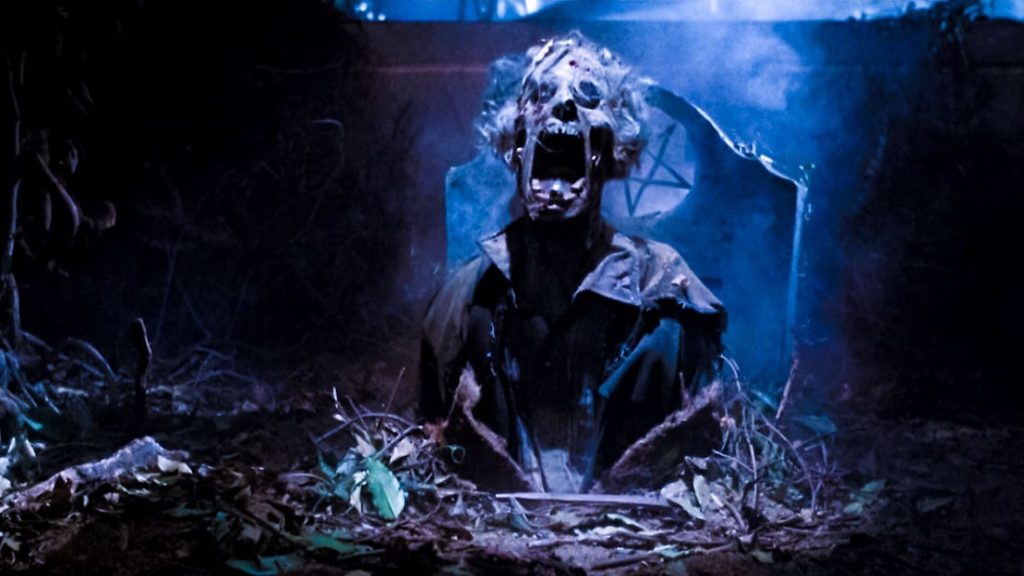
Pacing and structure are the two weakest elements in Ghoulies. Act I stutters from having barely enough reason to progress a plot. After an apparent ritual failure (one Ghoulie arrives late but poses no significance?) Jonathan slowly becomes addicted to the dark power within him as he quits school and grows distant from Rebecca in his thirst for arcane knowledge. Aware of the sagging middle, Jack Nance provides occasional narration that only recaps the obvious plot-points and tries to add gravitas.
The cast is perfunctory with the only praise going to the amusing eccentricities of Des Barres and Liapis, but the script is little more than a pitch of ‘little monsters terrorise a house’. Why did Wolfgang not clear out any occult relics from said house? What exact power is Jonathan thirsting for? What goal does Malcolm have in serving Lucifer after this? With the story so paper-thin we must expect wall-to-wall mayhem surely but the Ghoulie action is relegated to under 10-minutes of an already lean 81-minute runtime. Anthony Hopkins won an Academy Award for his small role in Silence of the Lambs (1991), people were terrified of the ocean after Jaws (1975) despite how we barely saw the shark, and yet here audiences may be left disappointed when the poster promises madcap antics like a toilet-beastie only for those moments to be more of an afterthought.
Perhaps the most revealing fact in the tonal unevenness is that “the original Ghoulies script was pretty dark” according to Bercovici. Upon seeing the SFX work of John Carl Buechler just two weeks before cameras would roll, the director exclaimed: “man, these are stupid”. The film morphed into a comedy as it was being made, unlike Gremlins that was designed to be a horror-comedy from the start. Here, while the end product may be entertaining, to an extent, objectionably the horror isn’t that scary and the comedy isn’t that funny.
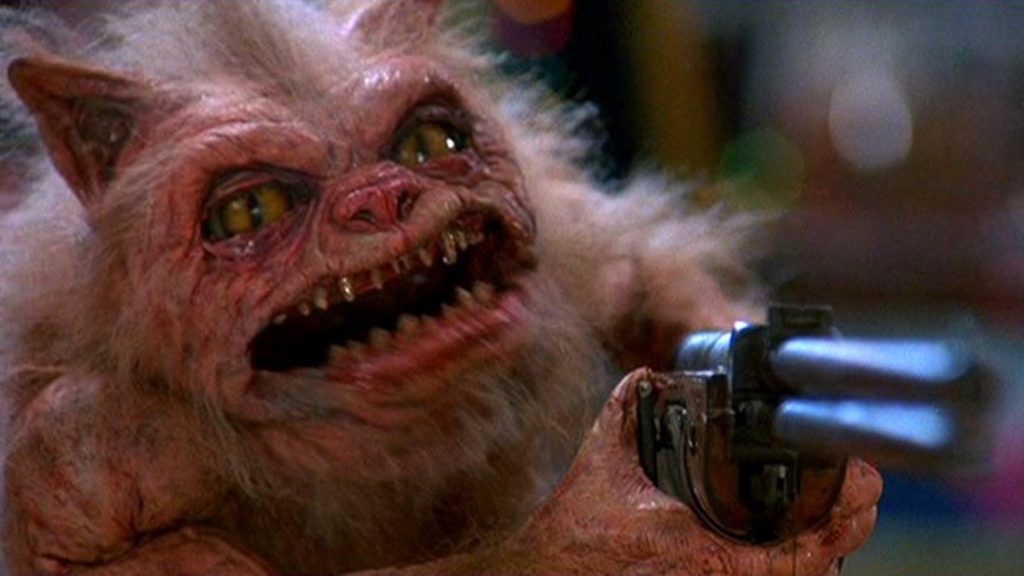
But despite rough criticism, the film endures. Ghoulies grossed $34M from a small budget of $5.5M at the box office and helped Band to get subsequent films like Re-Animator (1985) into cinemas rather than go direct-to-video. Following in its humble footsteps were three sequels from various directors and studios: Ghoulies II (1988) was bigger and better and even more connected to Band because his own father directed; Ghoulies III: Ghoulies Go to College (1991) was made under Vestron Video after Band sold the IP to save Empire Pictures; then Ghoulies IV (1994) became a real low-point despite the return of lead Peter Liapis.
Sadly, a third lawsuit was filed on Ghoulies by the creators themselves. Bercovici and Levy expected to be millionaires as they owned a full quarter of the film and yet were repeatedly told the budget remained in the red despite apparent profit. They sued their former friend Charles Band whose Empire Pictures was about to collapse, so the three eventually settled on a “silly, paltry sum” that was enough to move on. However little profit Ghoulies made them, it was enough to bankroll Band’s new company Full Moon Entertainment. Though he never returned to the film that got him where he is today his filmography of Puppet Master (1989), Demonic Toys (1992), Blood Dolls (1999), and Doll Graveyard (2005), to name just a few, owe a debt to Ghoulies.

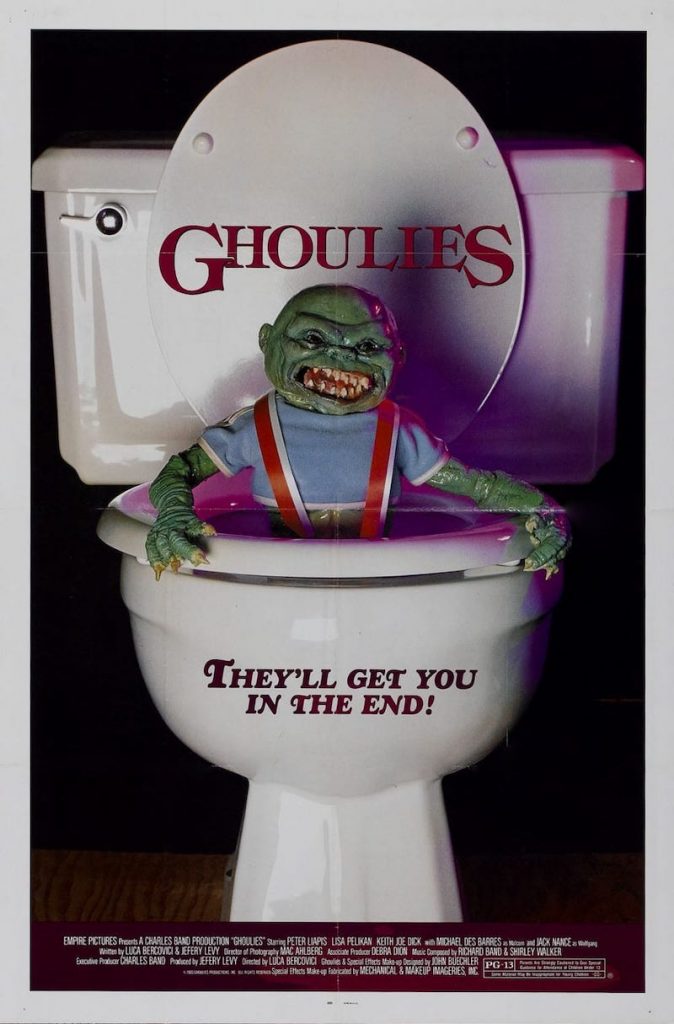
director: Luca Bercovici.
writers: Luca Bercovici & Jefery Levy.
starring: Peter Liapis, Lisa Pelikan, Michael Des Barres, Scott Thompson, Mariska Hargitay & Jack Nance.
